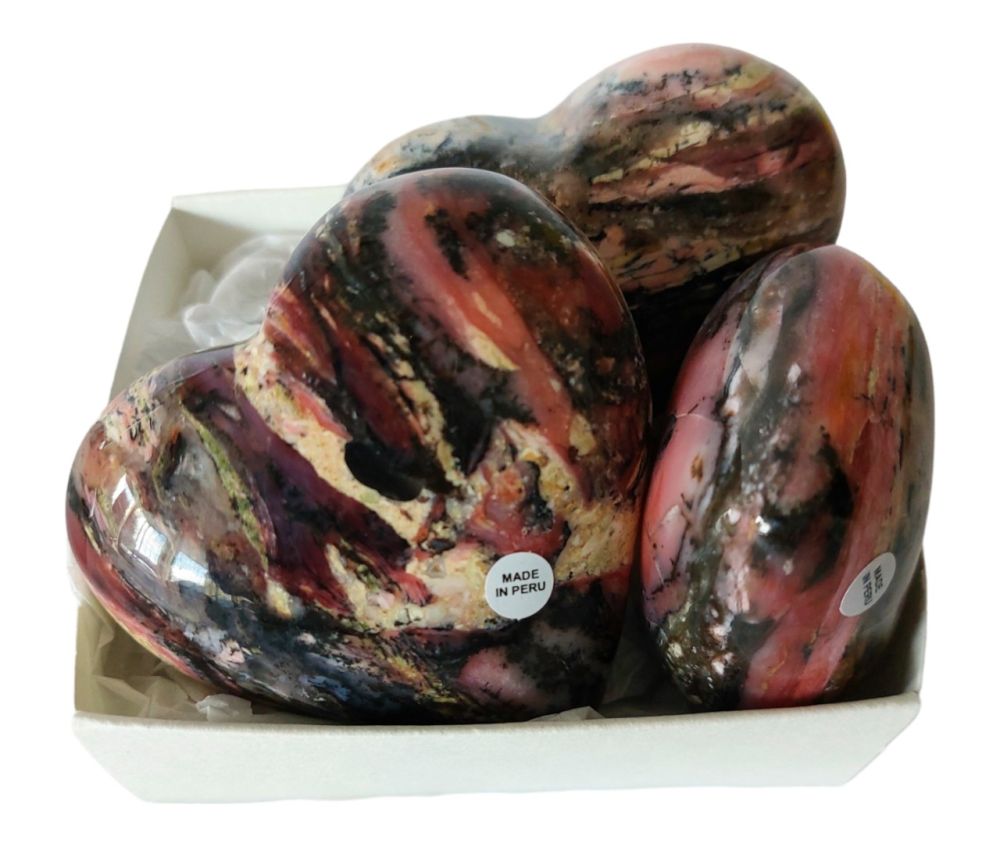We use cookies to make your experience better.
TimmersGems has a new website, existing customers also need to register again.
Pink Andes Opal hearts in beautiful dark color.
Beautiful minerals from the Andes-Peru! And above all, honest and untreated stones, those are the characteristics of Peru! Furthermore, the stone industry creates a lot of employment in the poor Andean region.
Availability:
In stock
SKU
121239
Pink Andes Opal hearts in beautiful dark color. is available to buy in increments of 200
The mineraloid opal is an amorphous variety of quartz, SiO2·nH2O, hydrated silica with a water percentage of up to 20%. Opal can be colorless, white, milky blue, gray, red, yellow, green, brown and black. Often many of these colors can be seen immediately, caused by interference and diffraction of light passing through tiny, regularly arranged openings within the opal's microstructure, known as Bragg's lattice. These gaps are filled with secondary silica and form thin lamellae within the opal during hardening. The term opalescence is used to describe this unique and beautiful phenomenon, although iridescence would be a better term. Opal is one of the minerals that form or can replace fossils. The resulting fossils are saved by collectors. "Opal" is derived from the Old Indian word úpala', meaning gemstone. A distinction is made between the glittering precious opals, the yellow-red fire opals and the normal opals. Their physical properties show important differences. The opal is the official gemstone of South Australia. Opal has been worked as a gemstone since ancient times. Initially it was used for the manufacture of primitive tools, later for decorative objects. Opal was already used by the Assyrians, Babylonians and Romans. Noble opal is one of the most mysterious stones. Traditionally it was considered a stone that brought bad luck, especially for people who did not clean the stone properly. The noble opal that Pliny described comes from the deposits of Dubník in Slovakia, which were already being mined at that time. This stone was attributed with magical powers. It helped against melancholy, calmed the nerves, healed the heart, protected against worries, restored vision and restored shine to the eyes. In addition to naturally occurring opal, opal is manufactured in many different ways, experimentally and commercially. The resulting material is distinguishable from natural opal by its regularity; under magnification the patches of color are seen to be arranged in a "lizard skin" or "chicken wire" pattern. Synthetic opals are further distinguished from natural opal by the former's lack of phosphorescence under UV light. Also, synthetic opals are generally lower in density and are often highly porous; some can even stick to the tongue. Two notable producers of synthetic opal are the companies Kyocera and Inamori in Japan. Most so-called synthetic opals, however, are more correctly called imitations, as they contain substances not found in natural opal (e.g., plastic stabilizers). The Gilson opals often seen in vintage jewelry are actually imitations consisting of laminated glass with sprinkled bits of foil.
| Dimensions | Divers |
|---|---|
| Country of Manufacture | Peru |












